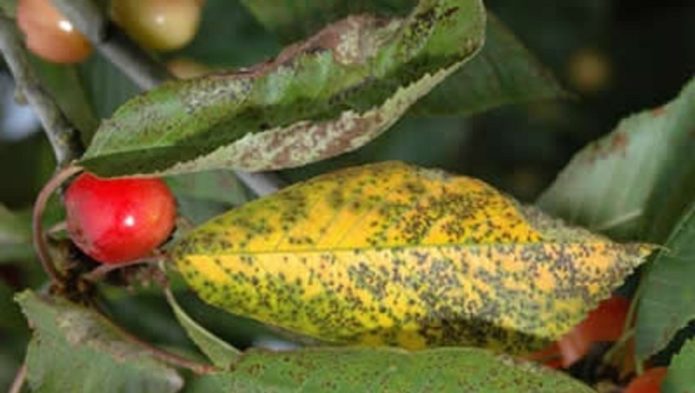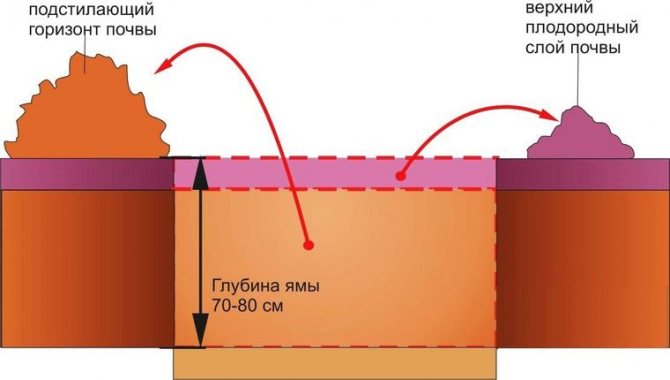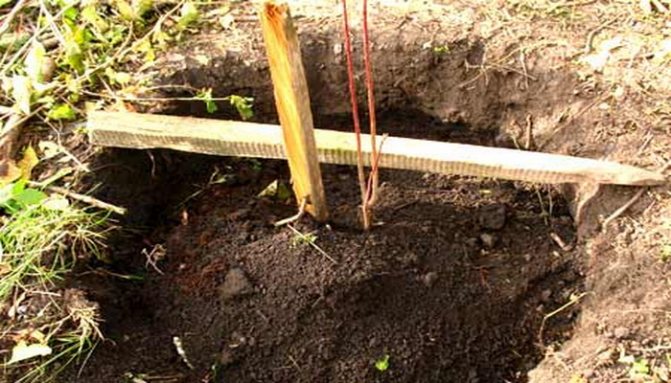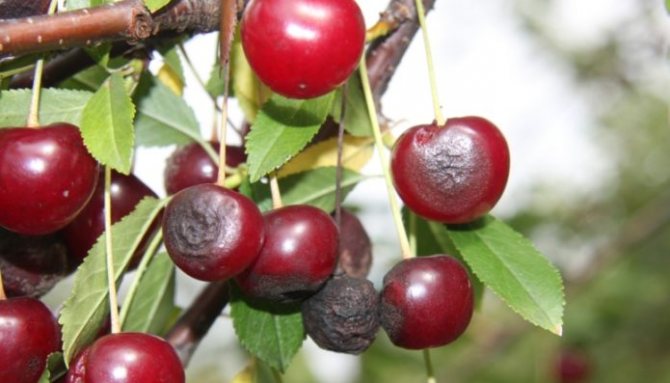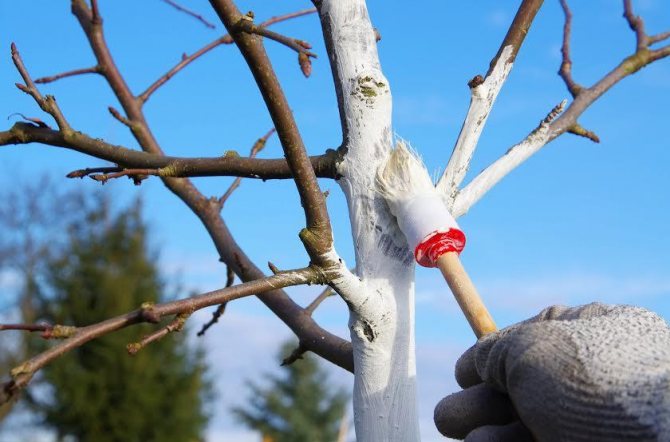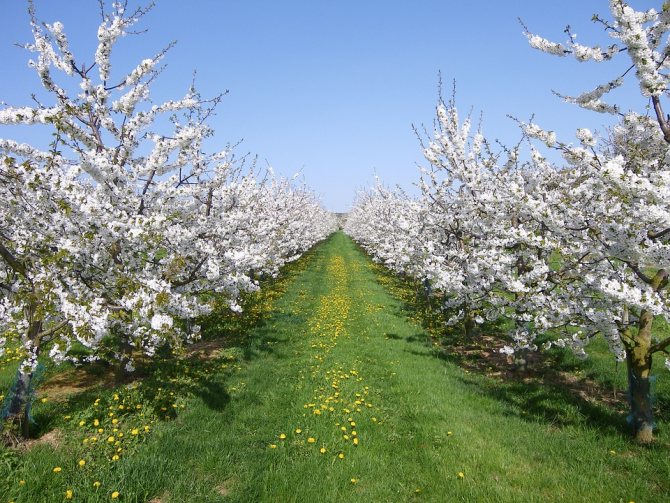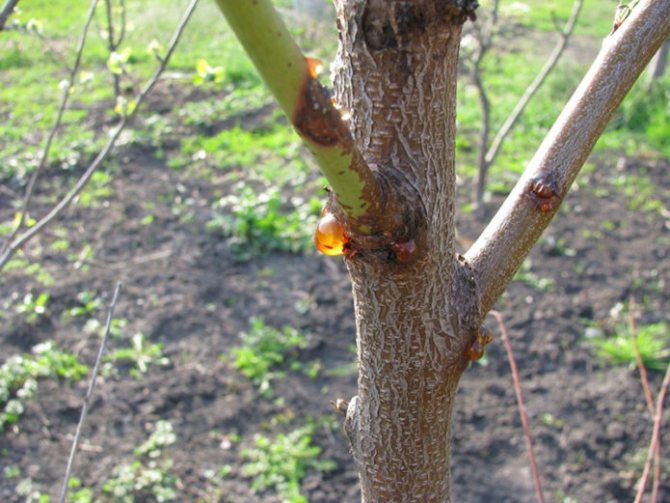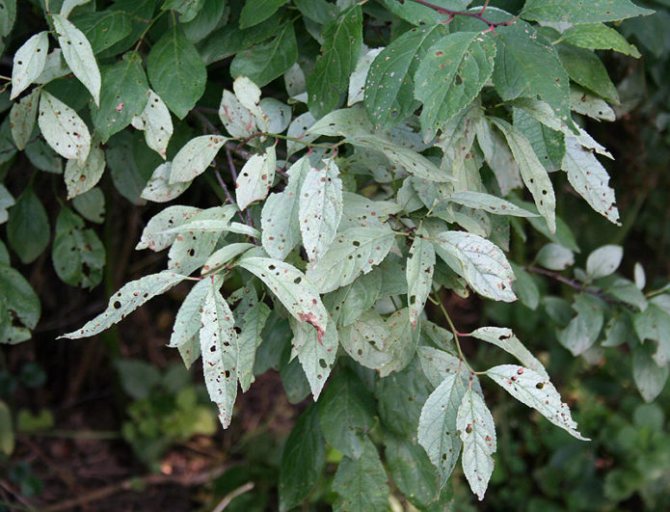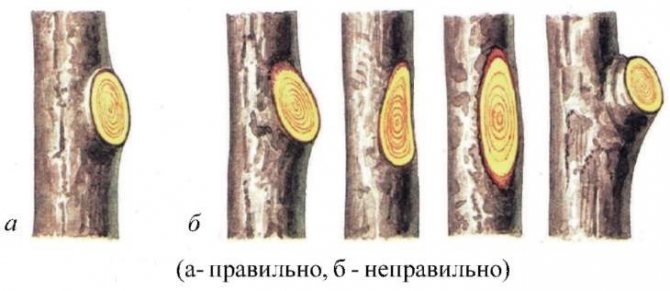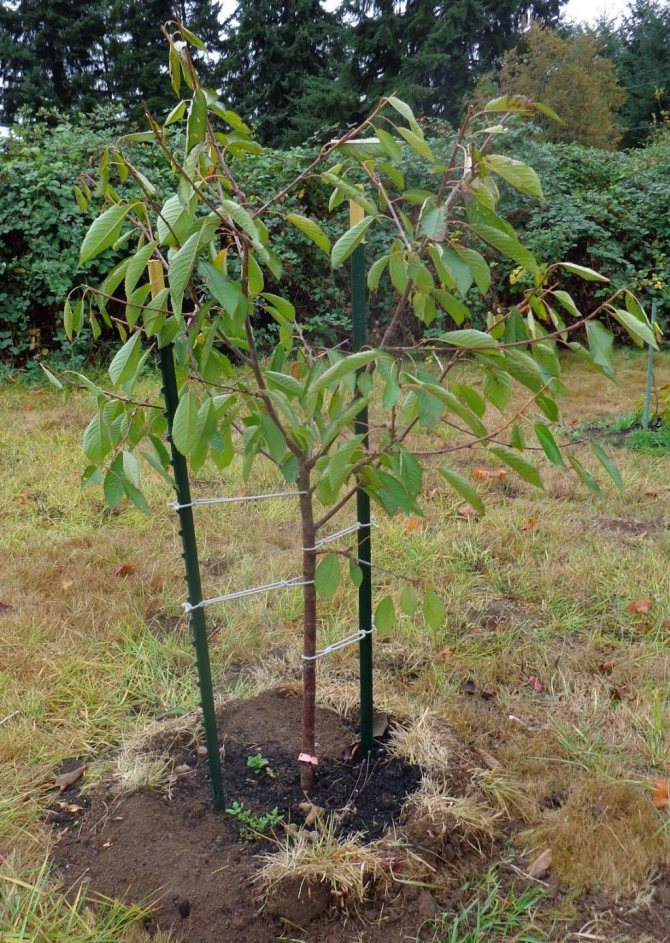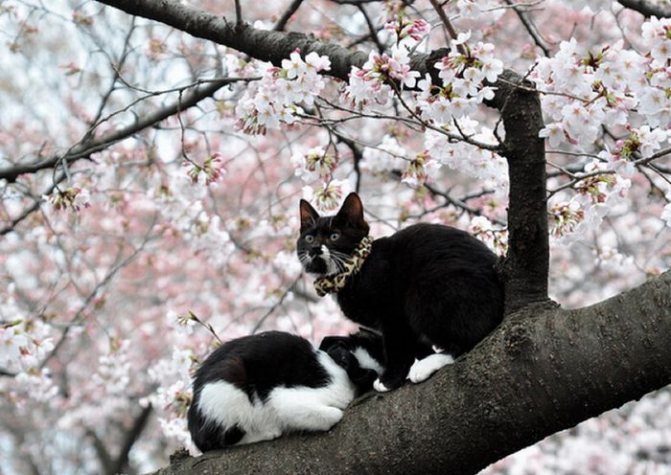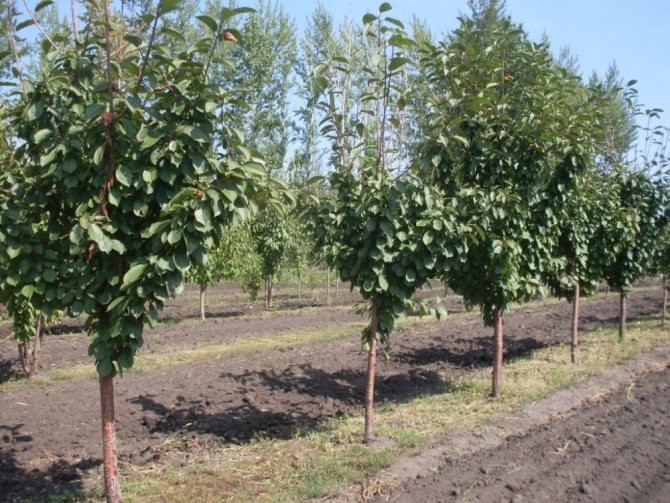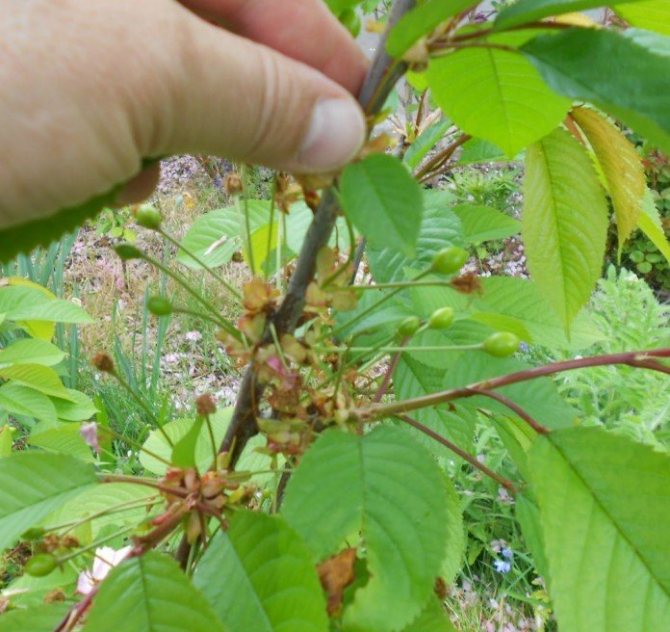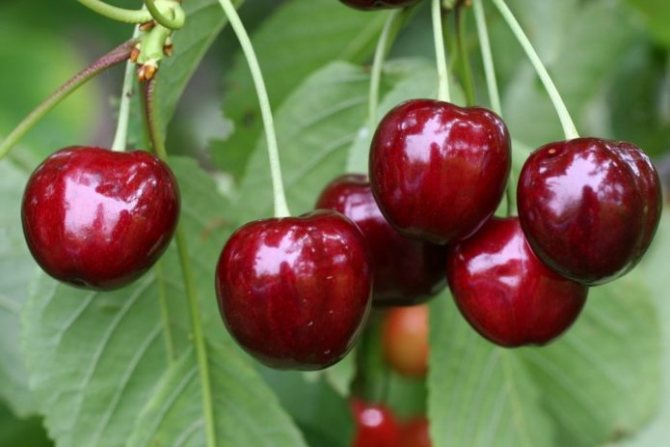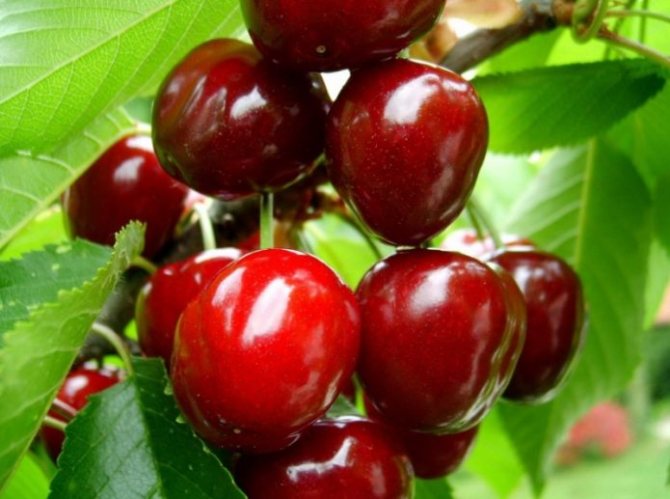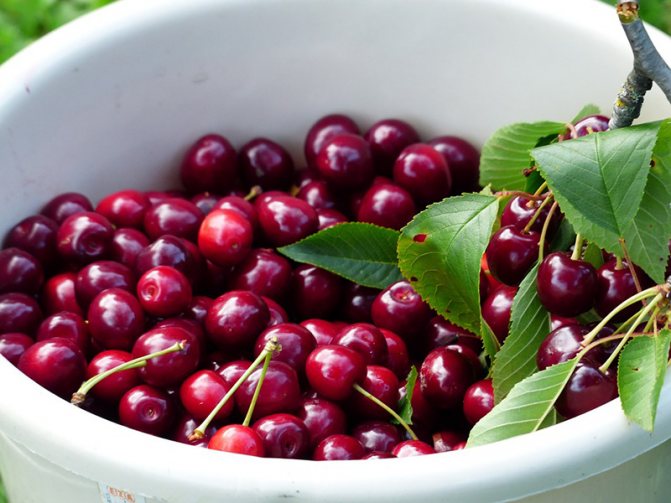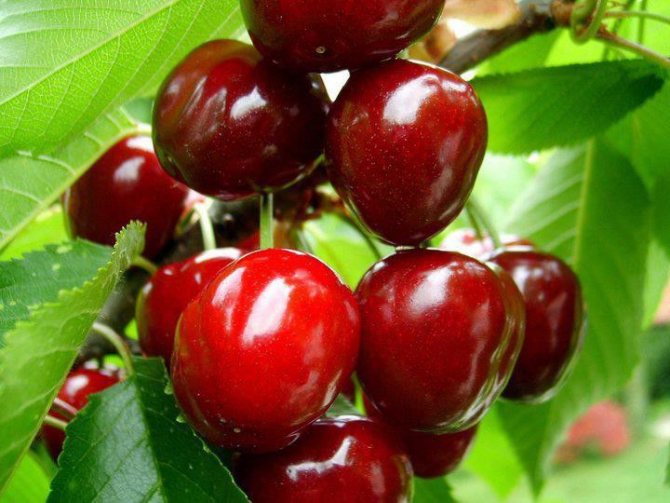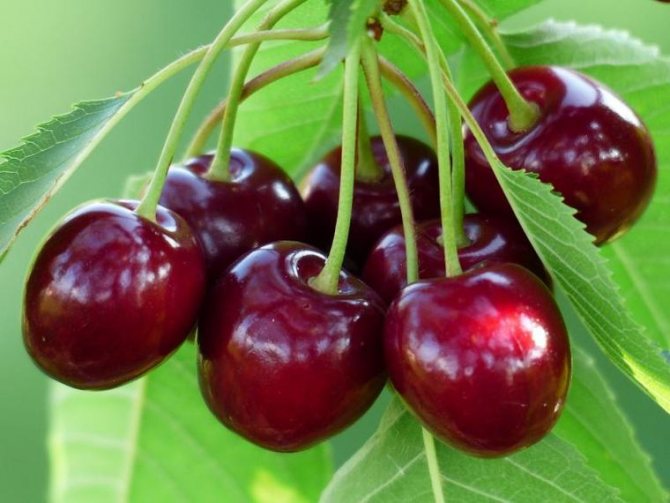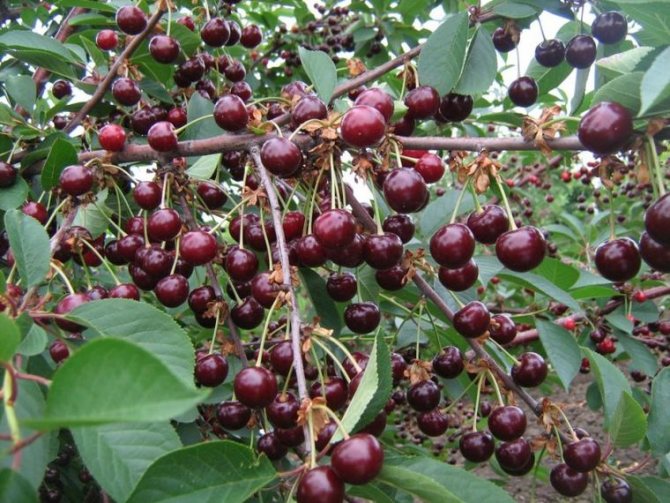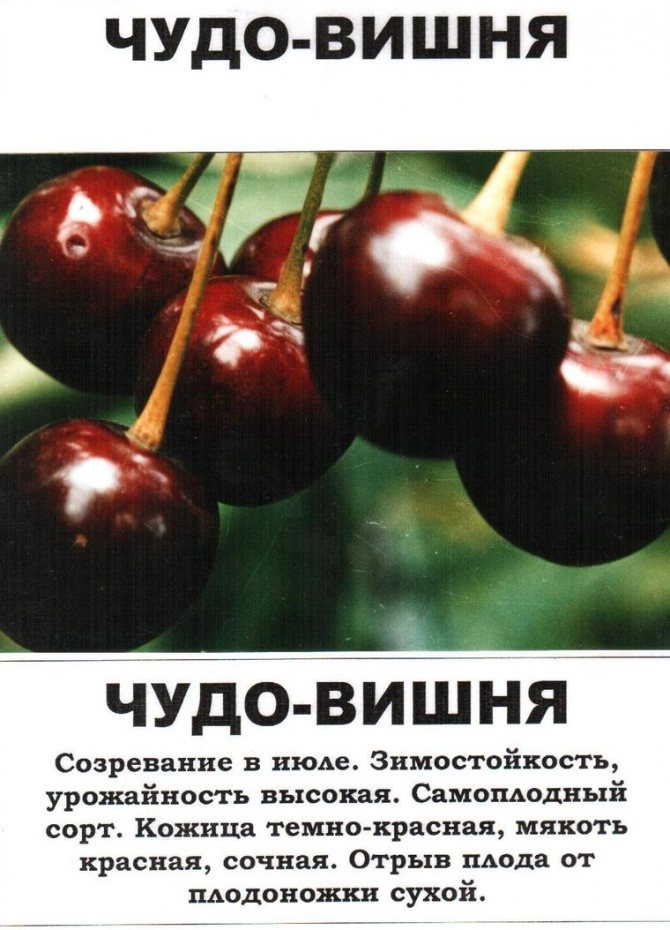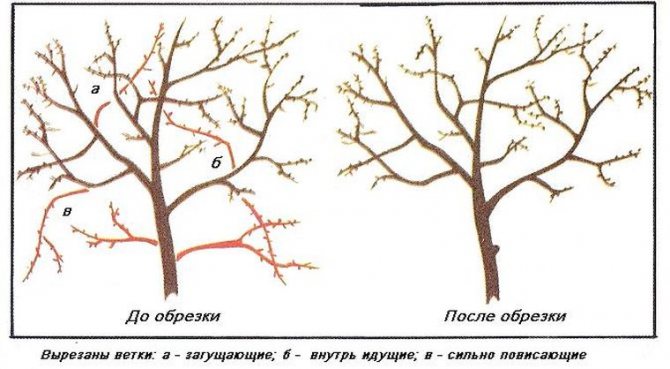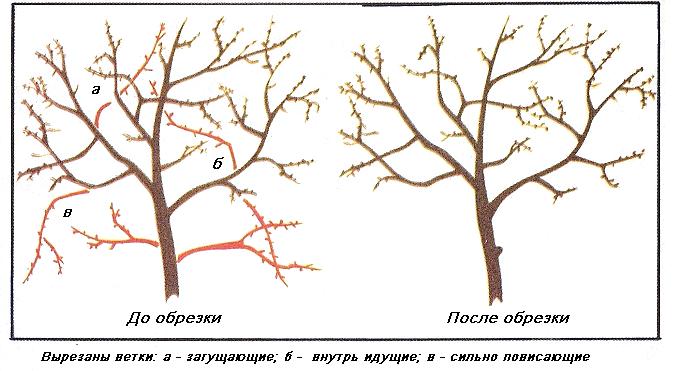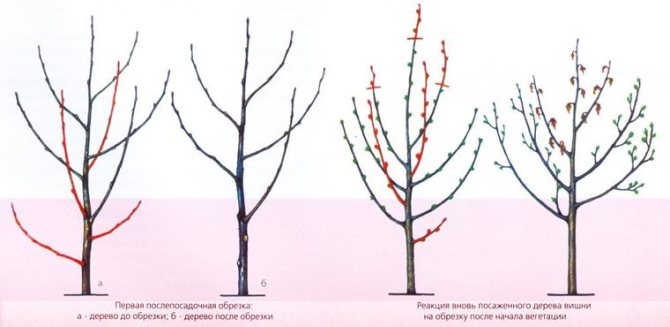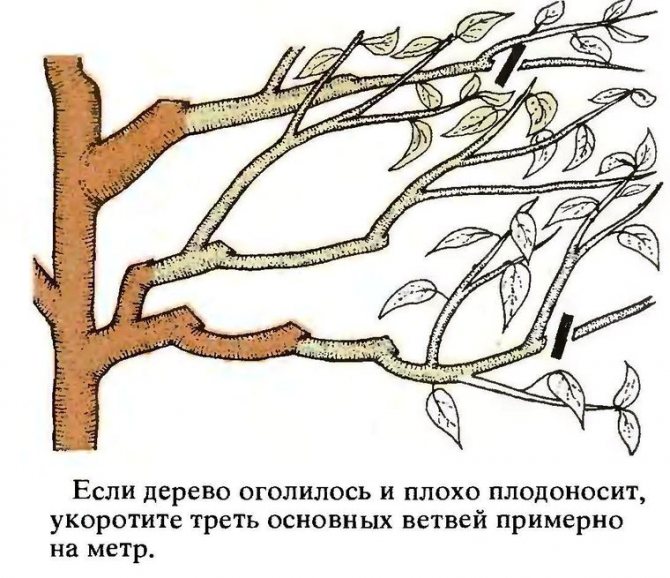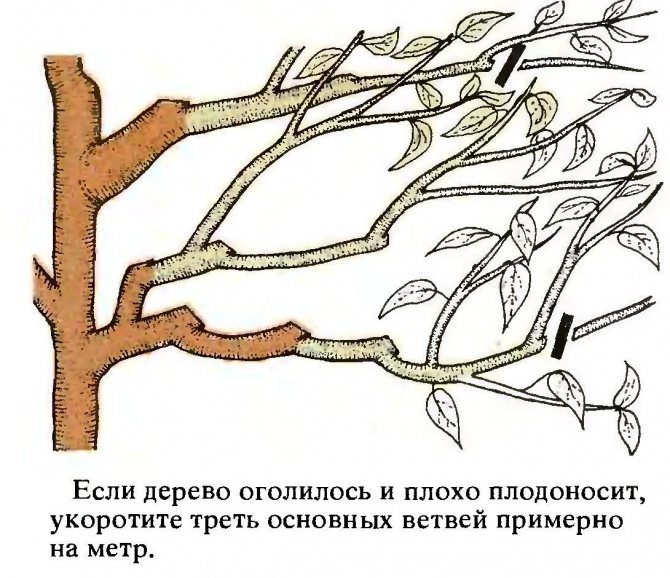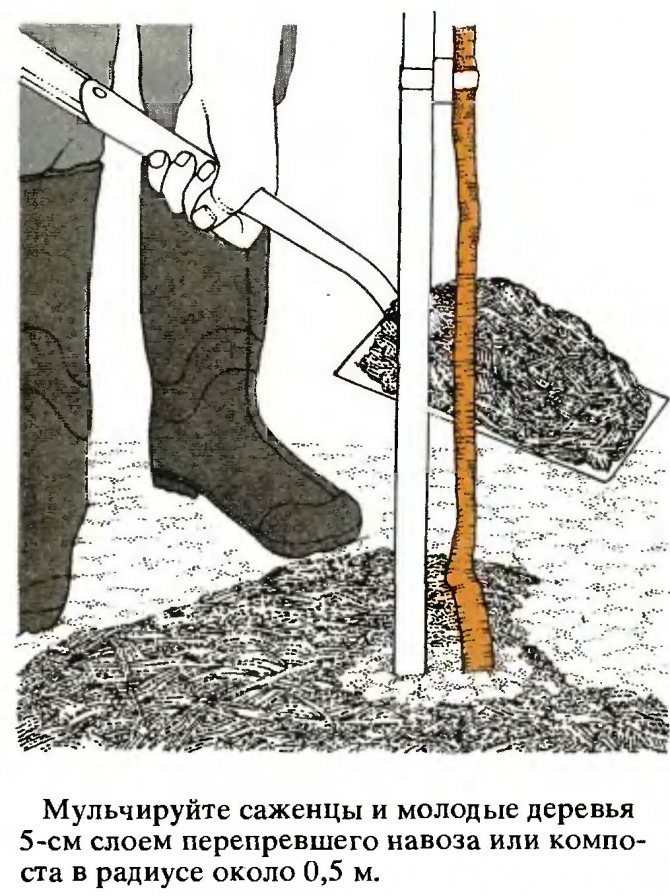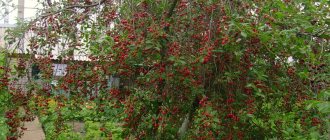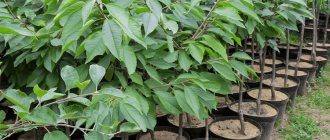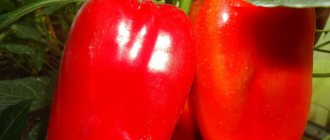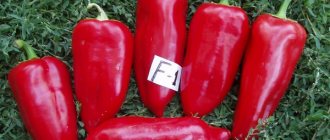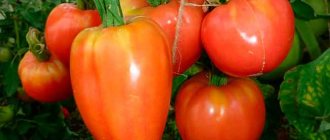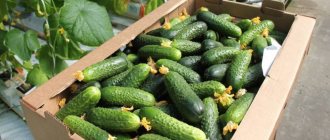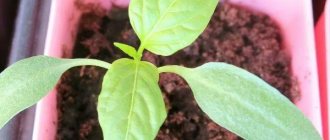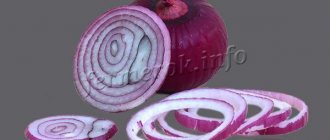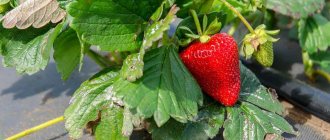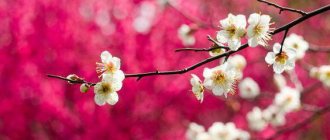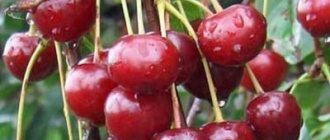Duke features
For a healthy tree to grow with consistent yields, planting needs to be considered.
You can plant Miracle cherries in spring and autumn. Depending on the climate of the region, each season can have both positive and negative sides.
In the south, by far the best planting season is autumn. And not only because it was at this time that there was a large selection of high-quality planting material. The advantage is the simplicity of caring for the seedling - it does not need to be watered often and care for the near-stem circle. In addition, before the onset of the dormant period, small trees already have time to grow small absorbent roots.
But, besides the pros, there are also disadvantages. Natural troubles are possible in terms of a very cold and snowless winter with strong winds. Such combinations can ruin the seedling if you do not take measures to insulate it.
Trees are traditionally planted in the spring in cooler climates. Such a landing will help to guaranteed to adapt to the coming winter. But caring for spring plantings is much more difficult and labor intensive.
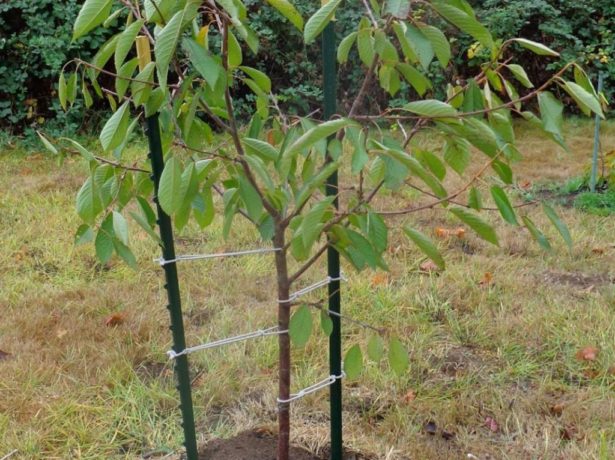
Planting cherries Miracle needs to be carried out depending on the climate of the region
Avoid low-lying areas immediately. Flooding and accumulation of cold air masses are possible there. These factors are completely undesirable. In the first case, there is a threat of poor development or death of the root system. In the second - late onset of flowering. Wind-blown areas will not work either. Groundwater should not approach higher than 1.5 m to the soil surface.
You should also consider the personal space of the seedling. Do not plant Miracle cherries in dense surroundings of other fruit trees. Close proximity weakens the development of the seedling and negatively affects fruiting. The distance to the nearest tree is 4 - 5 m.
For planting a thermophilic variety, a well-lit place, protected by buildings from the north, is more suitable. In such conditions, the Chudo cherry will be inaccessible to the north wind, and the snow cover will not be blown out. The neighborhood with a brick wall will be very successful, which, having absorbed the heat of the sun, will warm the cherry longer.
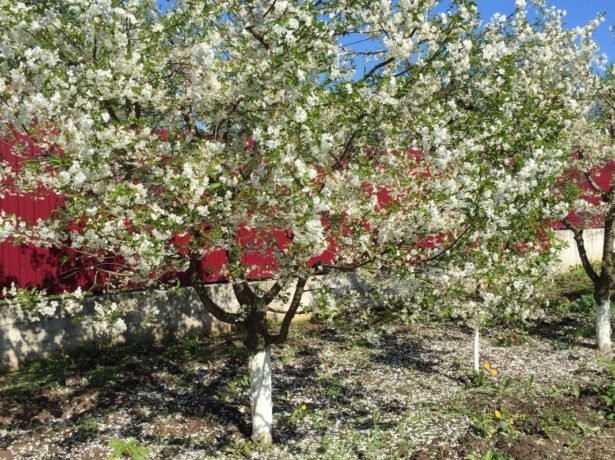

Cherry Miracle loves the warmest and sunniest areas in the garden
The best option for planting cherries Miracle - loose nutritious soils with neutral acidity. On heavy clay soils, pits of a larger diameter are dug and soil diluted with coarse sand in proportions of 1/1 is introduced there. Acidic soils are alkalized by adding up to 1.5 kg of lime to the pit and stirring thoroughly to prevent root burns.
Site preparation includes digging the soil with the removal of all weeds, especially perennial ones. If the soil is not fertile, manure or humus must be added to it.
For spring planting, it is advisable to prepare and fill the pit in the fall. If you plan to plant cherries in the fall, you need to dig a hole a month before the event.
- The parameters of the landing pit are as follows: depth 60 cm, width 70 - 80 cm.
- The fertile soil set aside is mixed with 1 bucket of humus (if the land is depleted), 2 - 3 glasses of ash, 250 g of potassium sulfate and 300 g of superphosphate.Everything is thoroughly mixed and laid on the bottom of the pit. In order for the soil mixture to acquire the desired structure, it should be watered.
In a month, the land will settle and acquire the necessary structure. Thanks to this, the seedling will not settle after planting.
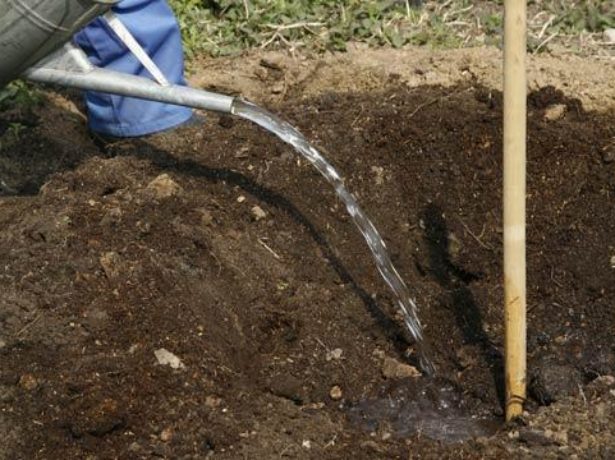

A planting hole dug in advance and filled with soil mixture must be watered so that the earth is compacted
Sapling selection
In order not to be mistaken with the choice of a variety (Miracle cherry seedlings are very similar to sweet cherry ones), the purchase should be made only in centers specializing in the cultivation and sale of planting material. Or from trusted sellers.
What you should pay attention to when choosing a planting material.
- Sapling age. 1 or 2 summer trees have the greatest survival rate. Their height will be from 1 to 1.5 m.
- Trunk. Smooth, free of lateral branches and visible damage. The bark is evenly colored.
- Roots. Well developed and elastic root system, free from damage, swelling and rotten areas. The root should be white when cut.
- Crown branches. Up to 12 branches, 10 to 20 cm long.
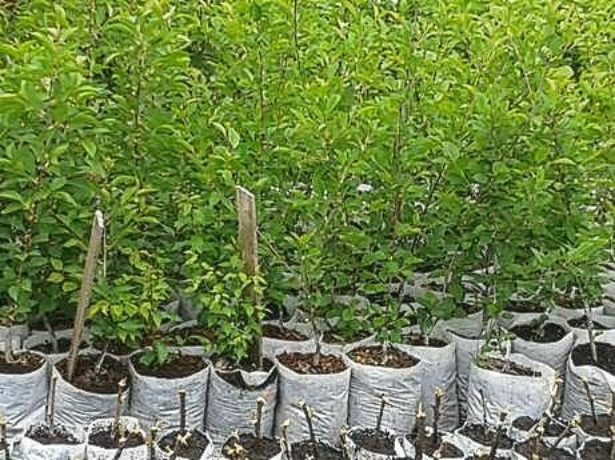

You need to buy Miracle cherry seedlings only in specialized centers
- Before planting, the root system of the tree must be processed by dipping it into a clay mash. To increase the survival rate, heteroauxin can be added to the solution.
- The soil in the pit must be collected with a shovel into a kind of mound. From the south side, closer to the center, drive in a support, which will serve as protection from the sun's rays.
- For a vertically installed seedling, spread the roots along the slopes of the mound so that there are no twists and creases.
- Fill the roots with the remaining soil, trying not to leave voids between them. Gently compact the soil around the seedling.
- Build a watering circle in the form of a girdle roller. Pour 2 - 3 buckets of water into it.
- When the moisture is absorbed, cover the soil with a layer of mulch, which will help retain moisture for a long period.
- Tie the seedling to the support with a soft rope.
- After planting, the root collar should remain at a level of 3 - 5 cm above the soil level.
Pollinators
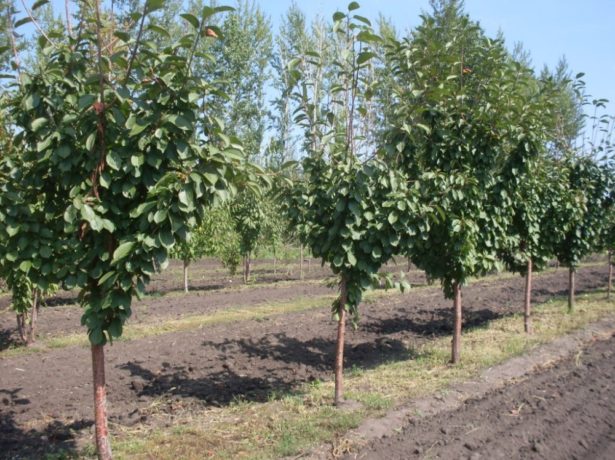

Cherry Miracle is a self-fertile variety. To get consistently high yields, it is necessary to choose the right pollinator varieties. The best pollinator for duke is sweet cherry, early flowering. The following varieties will cope with the task: Iput, Annushka, Donchanka, Yaroslavna and Kitaevskaya black.
Cherry Iput Cherry Annushka Cherry Donchanka Cherry Yaroslavna Cherry Kitaevskaya Black
Cherry and cherry hybrids differ in many ways from their "parents":
- Unlike parental couples, dukes are self-fertile. "Loneliness" is contraindicated for them. In order for the hybrids to bear fruit, zoned varieties of cherries and cherries, the so-called pollinators, are planted nearby.
- Dukes themselves are ineffective as pollinators.
- In the middle lane and in the Central Black Earth region, self-fertile cherries are usually used for pollination of dykes - Lyubskaya, Bulatnikovskaya, Molodezhnaya.
- The best pollinator for dukes is sweet cherry. Recommended pollinators for cherries are Donchanka, Priusadebnaya, and Annushka cherries. And the Iput cherry is considered an ideal variety for pollination.
You can read about the listed varieties of cherries in the next article. - Buying duke seedlings, they simultaneously acquire a pollinator. A high-quality pollinator is able to pollinate more than a third of the flowers - this is enough for the tree to be strewn with fruits.
- Dukes, in comparison with cherries, are more winter-hardy. And cherries, on the contrary, are inferior in winter hardiness. Because of this, in the northern regions, they grow in the form of bushes - their gardeners shelter for the winter, saving them from extremely low temperatures.
- Duke, do not feed during life. Due to the excess of nutrients, the intensified development of the tree begins, which, spending energy on growth, does not have time to really get stronger and prepare for winter. This leads to a lack of fruit or the death of the plant.
Description of cherry-cherry Miracle
Cherry Miracle, sweet cherry or duke, was first bred in the 17th century in England; to obtain it, the Duke of May cherries were crossed with cherries. On the territory of Russia, the first sweet cherry was obtained by the famous breeder Michurin in 1888, but his experience was not entirely successful - the plant had high cold resistance, but low yield. The Chudo variety was bred in 1980 by breeders Taranenko and Sychev, who crossed Griot's cherry and Valery Chkalov's cherry.


A hybrid of cherry and cherry combines the best features of both plants
The Miracle cherry inherited the best qualities from both parental cultures. It is distinguished by its high frost resistance characteristic of cherries, and a good yield with sweet fruits - this is inherent in sweet cherries. It is recommended to grow Miracle cherries in the Central region, the Moscow region and the middle lane, it calmly tolerates frosts down to -20 ° C. The variety is also suitable for breeding in Siberia, but there the Miracle must be carefully protected from frost.
A hybrid of cherry and sweet cherry Miracle cherry is a tree with an average height and moderately dense crown, rounded in shape. Cherry shoots are straight, smooth and covered with dark brown bark, leaves are dark green and large, similar to cherry ones. The Miracle blooms with large flowers, 5-8 pieces in each brush.
What is the size of the cherry tree Miracle
On average, the Miracle grows up to 3 m in height. The crown of a tree at a young age is pyramidal, and over the years it becomes more spreading and rounded.
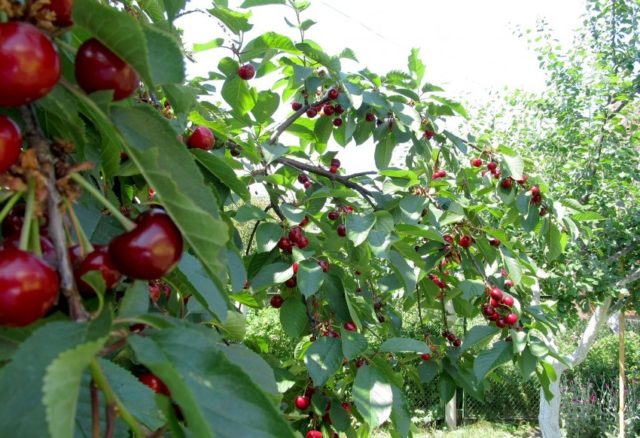

The height of an adult cherry is average, about 3 m
Description of fruits
Ripe cherries Miracle are large in size, each of them by weight can reach 10 g. The shape of the fruit is flat-round, the color is dark red. According to the photo and description of the fruit of the Miracle Cherry variety, the berries are covered with a dense shiny skin, the juicy pulp has a pronounced cherry aroma and a sweet taste with a slight sourness. The tasting score of the fruit is about 5 points, the berries are considered dessert.
When ripe, the fruits of the sweet cherry Miracle cherry can remain on the branches for a long time, so there is no need to hurry up with the collection. Since the tree belongs to the category of sun-loving, the fruits tolerate bright sunlight well and are not baked under the rays.
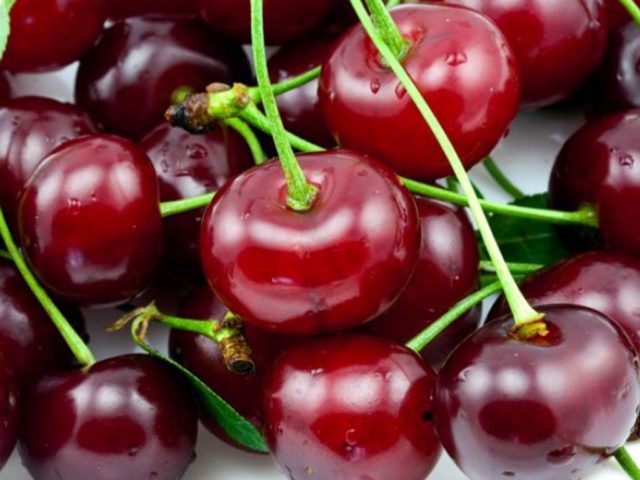

Cherry produces very large and juicy berries.
The best pollinators for Miracle cherry
Cherry blossom Miracle usually begins in mid-May. The variety is self-fertile, which means that with a single planting, it will tie a maximum of 5% of the possible amount of fruit. Therefore, to get a harvest next to the Miracle, it is imperative to plant cherries with similar flowering periods. Cherries Tenderness, Yaroslavna, Iput and Donchanka are best suited for the role of pollinators for the Duke Miracle Cherry.
Important! Theoretically, cherries with similar flowering times can be planted next to the Miracle for pollination. But in practice, this is rarely done - pollination from cherries or other dukes is often not perceived by the Miracle.
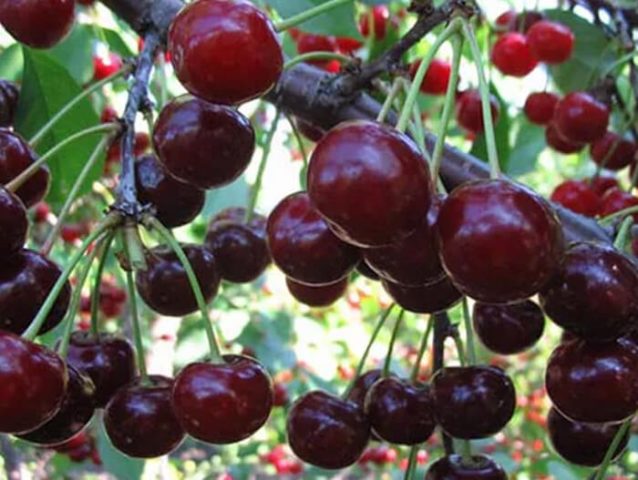

Without pollinators, sweet cherries will not be able to give
Description and characteristics
The cherry tree has a small, compact crown. The branches, arranged symmetrically, are covered with elongated glossy leaves. The inflorescences are white, and the fruits are red-cherry.
Duke, being an intermediate crop, combines the features of two plants at once:
- Fruit. In appearance and taste, the fruits of the duke are closer to cherries, but in size and sugar content they are similar to cherries.
- Leaves. Large, like a sweet cherry. Density, color and luster - like cherry.
Cherry characteristics:
- The average weight of berries is 8-10 g.
- The taste is sweet, with a slight sourness.
- The first fruits appear in the 3rd year after planting.
- Average yield is 10-15 kg per tree per season.
Advantages and disadvantages
Like any variety, this plant has its own advantages and disadvantages.
pros
Let's list what advantages the plant has:
- the possibility of obtaining an early and rich harvest;
- good winter hardiness;
- the presence of immunity to many diseases that often affect other plants;
- pleasant sweet taste.
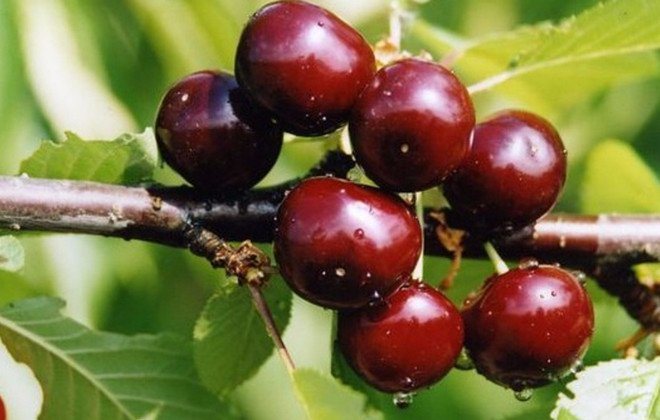

Watering and loosening
In fact, these two agronomic procedures are interrelated. The variety is quite drought-resistant, but trees, especially when it is very hot, need moisture.
Young seedlings are watered once every 2 weeks, pouring 4 buckets of water under the tree. Fruiting trees are watered less often, only three times during the entire growing season: before flowering, during fruit set and after harvest.
During the period of fruit ripening, the tree is not watered so as not to provoke the cracking of the crop.
After watering, the soil under the crown must be loosened. The soil is loosened to a shallow depth, up to 10 cm. The main thing during loosening is to do everything carefully so as not to damage the root system (it concerns young trees).
Top dressing
Fertilize the tree in moderation. Excessive fertilization will have an even worse effect on the tree than not fertilizing it at all. This is especially true for nitrogen-containing dressings, which are applied only in the spring period of time (if you use nitrogen in the fall, then the winter hardiness indicator will significantly decrease).
In the first 2 years after planting, the duke does not need any additional feeding. Naturally, provided that the seedling was planted in a fertilized hole.
In the 3rd year of a tree's life, it is fertilized in the spring with urea at the rate of 60 g per 1 bucket of water, in the fall with phosphorus-potassium fertilizers (at the rate of 30 g per 1 bucket of water).
Fruiting trees require a full four-time feeding for the growing season:
- When the season has just begun, the tree is "fed" with ammonium nitrate at the rate of 20 g per 1 m2.
- Before the buds appear, superphosphate is used (3 tablespoons are diluted in a bucket of water).
- After the flowers have crumbled, nitrophoska is used (50 g of the substance are diluted in a bucket of water).
- After the end of fruiting, fertilization is carried out with potassium sulfate (100 g) and superphosphate (100 g / 10 l).
Before winter, humus should be laid out along the trunk circle. Also, every year you need to deacidify the soil with lime at the rate of 500 g per 1 m2.
What are the varieties of cherries?
The first cherry variety - "Krasa Severa", was bred by I. Michurin. The hybrid was distinguished by excellent winter hardiness. He has large - up to 10 g, tender-scarlet berries with yellow-creamy pulp. Following Michurin, other breeders continued to work on breeding winter-hardy varieties of sweet cherries.
Today, there are dozens of varieties of dukes on the market, differing in terms of ripening, berry size and frost resistance. Their yield is approximately the same - 10-15 kg per tree, and it depends mainly on the growing conditions.
Consider the characteristics of popular types of dukes in the table below.
Table 1
| Variety | Ripening period | Fruit weight, g | Taste | Features of the |
| Spectacular | middle | 6-8 | sweet and sour, with cherry aroma | Good transportability. |
| Excellent Venyaminova | mid-late | 6-8 | sweet and sour, dessert taste | Insufficient winter hardiness of flower buds. |
| Miracle cherry | early | 9-10 | sweet, sour | The most popular variety. Most of all it looks like a sweet cherry. Demanding heat. It is inferior in winter hardiness to other varieties. |
| Night | middle | 9-10 | sweet, slightly sour | Drought resistance, high immunity to coccomycosis. |
| Spartan | middle | 5-6 | sweet, sour | The yield is above average. High winter hardiness. |
| Fezanna | middle | 9-10 | sweet, sour - excellent | Differs in special quality and taste of fruits - this is a reference duke. High decorativeness of the tree. |
| Nurse | middle | 7-8 | sweet, sour - considered a reference | High winter hardiness - both tree and flower buds are not afraid of frost. |
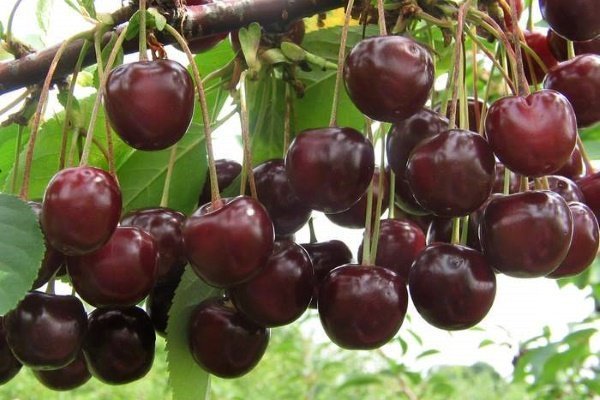

Duke "Spectacular"
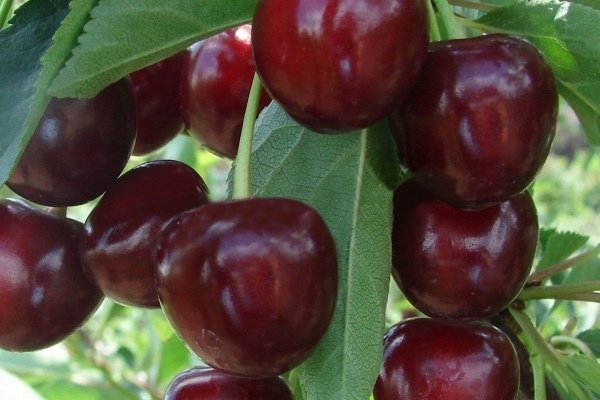

Duke "Excellent Venyaminova"
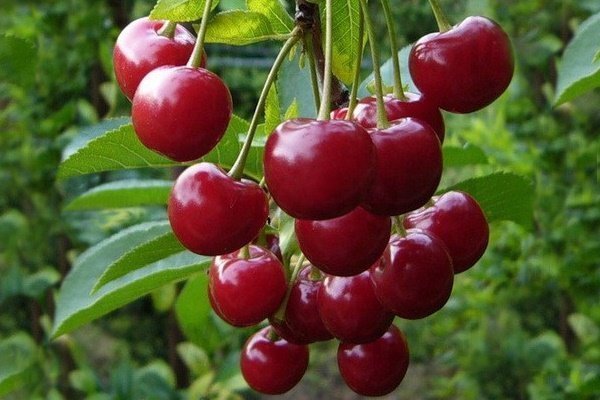

Duke "Miracle cherry"
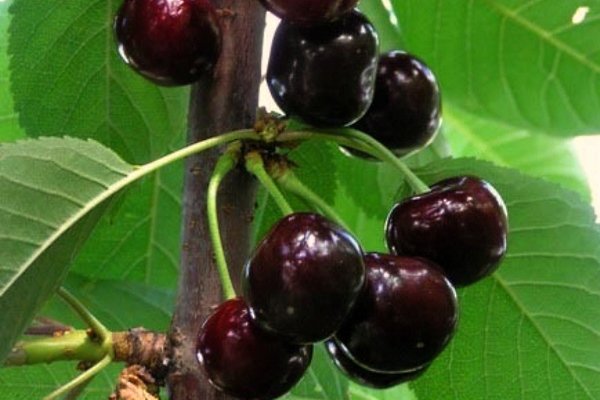

Duke "Night"
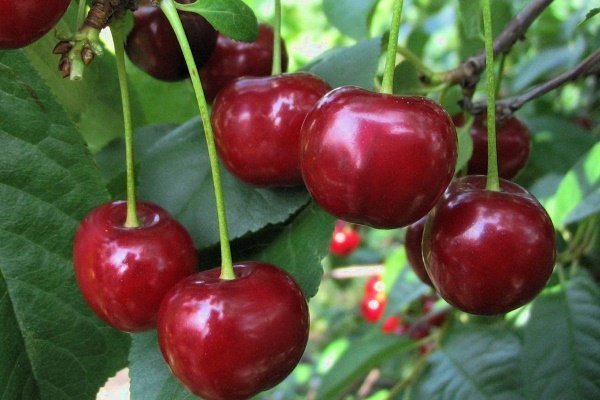

Duke "Spartanka"
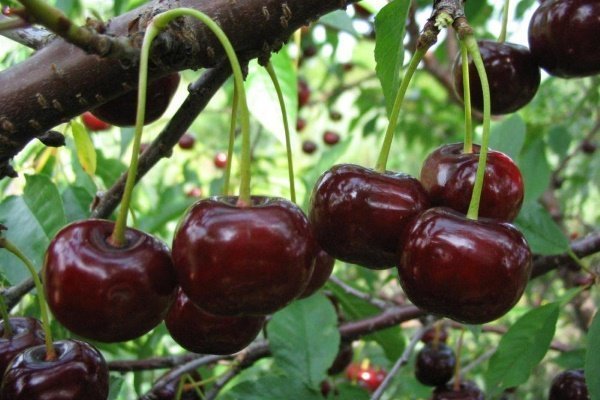

Duke "Fesanna"
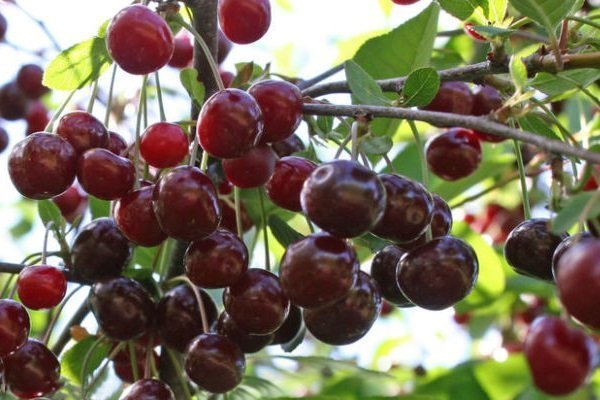

Duke "Nurse"
Breeding history
The most popular among gardeners is the Miracle Cherry. Let's see what a "Duke" cherry is. The variety is the result of crossing certain varieties of cherry and sweet cherry.
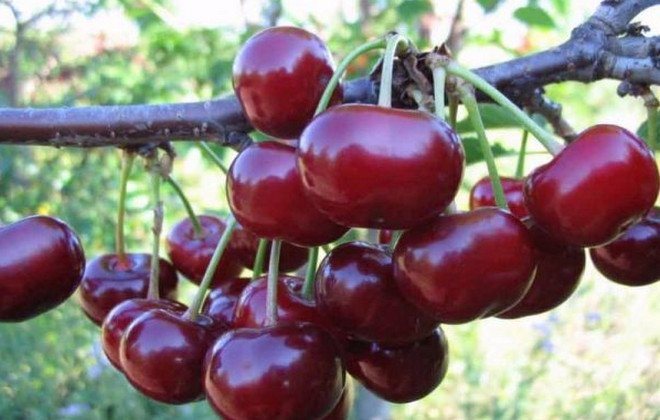

The berry was obtained as a result of the work of a breeder and agronomist from Ukraine Lilia Taranenko. The variety is a combination of the Valery Chkalov cherry variety and the Griot cherry variety.
Important! When planting young seedlings, you cannot deeply deepen them into the ground, as this can cause their death.
Immunity
The variety has a fairly good immunity that protects the Miracle Cherry from most infections and insects. The miracle cherry is very rarely affected by such diseases as coccomycosis and moniliosis; also, the tree is very rarely affected by the cherry fly. Nevertheless, there are diseases from which Duke is still not 100% protected.
- Gommoz. With this disease, a light brown sticky substance called gum appears on the branches and trunk. This disease causes branch breakage or severe temperature changes. In order to prevent the appearance of this disease, you need to properly prune without damaging the tree, and also not to overfeed the cherries with fertilizers.
- Clasterosporium disease. The primary sign of the onset of this disease is the formation of spotting on the leaf plates. Over time, holes with a red border appear in place of the spots. The best prevention of clotterosporium disease is crown thinning.
- Gray rot. This disease develops best in humid conditions. During gray rot, gray neoplasms appear on the branches, and then the fruits rot. The best preventive measures are timely pruning and not overdoing the fertilization of the tree.
- Powdery mildew. When it is very hot, a characteristic white bloom appears on the leaves and branches. This leads to the fact that the leaves begin to crumble, and the yield drops significantly. The best preventive measures to combat powdery mildew are timely watering and high-quality fertilization of the tree.
Pros and cons of the variety
The miracle cherry is distinguished by a high level of frost resistance, but at low subzero temperatures, flower buds can still freeze slightly. The result is poor fruit setting.
But the variety is resistant to infections, monilliosis and coccomycosis - the main thunderstorm of cherries - he is also not afraid. Cherry fly planting practically does not strike. Read how to treat cherry moniliosis in this article.
Miracle cherry is a variety that is resistant to frost and diseases, but one should not forget about shelter for the winter and preventive treatments from pests.
Gardeners definitely need to remember about the correct and timely formation of the crown. As a result, it will be narrow-pyramidal, with a characteristic sharp branching angle. Also, the plant can stretch upward strongly. To slow down the active growth of the tops of the Duke, the branches are pulled horizontally. This gives the crown the shape of a hemisphere and slows down its growth rate. Find out when you can transplant cherries at this link.
Optimal growing regions
Since the breeders have bred dozens of winter-hardy varieties of sweet cherries, they have been grown in almost all regions of Russia. When choosing a variety for planting, it is important to correlate its frost resistance - the lowest possible temperature withstands, with winter temperatures typical for a particular region. Depending on climatic conditions, the appearance of the plant is formed - in the form of a tree or in the form of a bush.
The first cherries did not feel comfortable even in the middle lane, while today's varieties, hardy and frost-resistant, moved far to the north. Today the dukes grow and bear fruit in the Leningrad, Nizhny Novgorod, Novosibirsk regions, in Siberia, in the Far East.
Diseases, pests and methods of dealing with them
By crossing cherries with cherries, breeders have achieved excellent results: such trees practically do not get sick, because cherries are resistant to pests and diseases and are a protector of the cherry with which they were crossed.
However, a perfect hybrid has not yet been bred, about which one could say with complete confidence that he will never get sick. Therefore, it is recommended for prophylaxis to inspect the tree in order to start treatment on time, if necessary.
The first preventive treatment of the tree is carried out in early spring before the start of sap flow, after pruning. The sections are treated with a 1% solution of copper sulfate, then covered with garden varnish. Tree trunks are whitewashed with lime mortar. After that, the cherries are sprayed with urea (700 g must be dissolved in 10 liters of water). This will destroy the pests that hibernate in the bark, as well as pathogens.
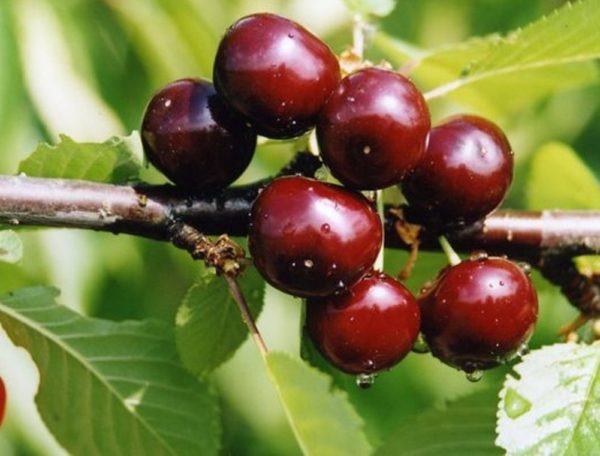

Diseases of cherries quickly spread in thickened plantings, in rainy weather, if care is not followed.
Cherry care
Caring for cherry and sweet cherry hybrids is not difficult even for novice gardeners. By spending a minimum of time on this unpretentious tree, large yields of delicious berries are obtained. Unlike other fruit trees, ducks do not need additional fertilizing, which further simplifies maintenance.
It is recommended to water the planted young growth every week. Water it abundantly, take the water that has settled, not cold. The older the tree gets, the less watering it takes. Watering for dukes - regardless of age, a mandatory event. For an adult tree, approximately 20-40 liters of water is required. During periods of prolonged droughts, the displacement is increased.
Like all stone fruits, cherries do not like frequent and abundant irrigation. Waterlogging leads to decay of the roots and cracking of the bark of the trunk and skeletal branches. Watering is more needed for trees up to 5 years old, and then the frequency of irrigation is reduced, focusing on the weather.
To make the root system feel comfortable, two loosening per season is enough. Loosening saturates the soil with oxygen, and at the same time removes weeds. It is recommended to loosen the soil in the near-trunk circles after watering. Often gardeners sow siderates in gardens - to fertilize the soil, for dykes this option is allowed, but with one condition - the near-trunk circle should be only under black steam.
So that the roots of the tree do not overheat, and moisture from the soil does not evaporate too quickly, the trunk circle is mulched. The recommended mulch is hay. It is forbidden to scatter mulch over dry soil.
Top dressing
The absence of the need for feeding is an important advantage of the ducks. Fertilizers are applied only when the seedling is planted. In the future, the gardener is relieved of additional fertilizing - the ducks develop better and bear fruit in soils of medium nutritional value.
The first time the cherries are cut directly after planting. From the surface of the ground to the cutting point - 0.6 m. After cutting off the top, cut off the skeletal branches. On seedlings 2 years old, the side branches are cut by 1/3.
While there is no harvest, the young grows intensively. And as soon as the first berries appear, the growth activity decreases. The crowns are thinned out in a timely manner - their thickening leads to a decrease in yield. When cutting off branches, take into account the angle at which they move away from the trunk - the sharper it is, the smaller the cut end.
In old trees, rejuvenating pruning is carried out every 5 years - shoots are removed along the entire crown - to the level of four-year-old trees.
Cherry fruits, in addition to high taste characteristics, have several important useful properties, they are;
- have an antibacterial effect;
- have a beneficial effect on the digestive tract;
- prevent the growth of malignant neoplasms.
Harvesting and storage
With proper care, the Miracle cherry yields 10-15 kg of excellent large fruits. It is possible to collect a massive crop in the 3rd year after planting.
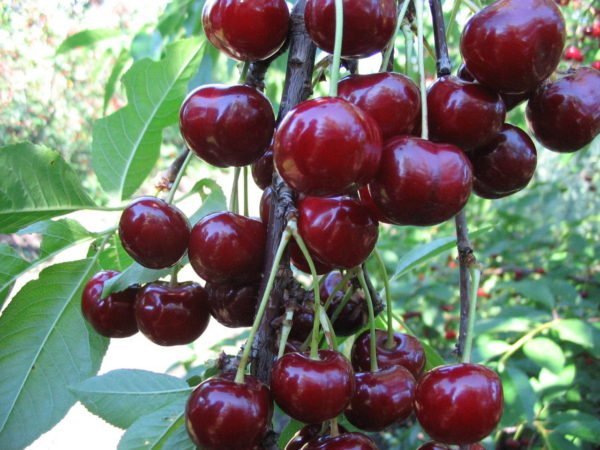

Cherry Miracle yields 10-15 kg of fruits
For storage, fruits are harvested of a dark red color with dense pulp and a green stalk. They are sorted and placed in boxes lined with paper. It is not recommended to wash cherries before storage.
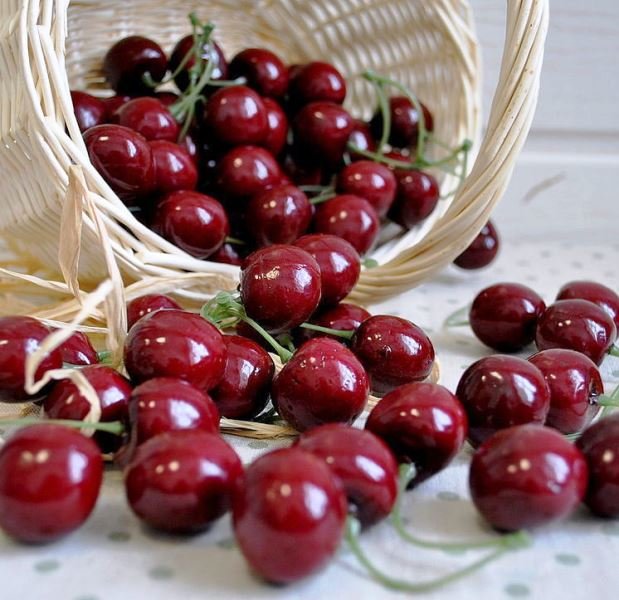

At low temperatures (from -1oC to 1oC) and relative humidity (85-90%) cherries of this variety are stored for up to 2 weeks. You can also store berries at a lower temperature in the freezer (in plastic bags or plastic containers).
The fruits of the Miracle cherry are widely used in cooking. They are used to prepare marshmallows, jam, candied fruits, compotes, liqueurs, berries are dried and frozen.
Cherry fruits are ready for picking in June or July - it all depends on the climatic characteristics of the region and the ripening time of a particular variety. The harsher the climate in the region, the later the harvest.
The berries are removed without tearing them off the stalks - this extends the shelf life and allows you to transport the crop. The portability of the ducks is unimportant, it is not recommended to store the berries - it is advisable to put them into processing as soon as possible.
If you can't process the fruits right away, you can extend their life by placing them in the refrigerator. You do not need to wash them before storing them. containers are not covered. Cherry berries are stored for no longer than two weeks. Candied fruits, marshmallows are made from berries, jam is made, liqueurs are prepared. The fruit can also be dried and frozen.
Harvesting the harvest
Cherry Miracle is an early variety, so the weather is one of the main factors in the speed of harvest ripening. If the summer is hot, then the cherry ripens in the first half of June. In moderate weather, the ripening rate is slightly lower - by the end of June.
Fruiting occurs very early. But the first harvests are not very big. Starting from the 4th year, the Miracle cherry begins to bring full-fledged harvests. Up to 10 kg of juicy fruits can be harvested from one tree.
Cherries are best harvested in the morning after the dew has dried. Or postpone a pleasant activity in the afternoon, when the sun's rays will slightly reduce their activity. For transportation or storage, the cherry must be plucked with a stalk or carefully cut with scissors, leaving a small part of the cutting. With this collection, the berry will retain its excellent appearance for a long time without signs of damage.
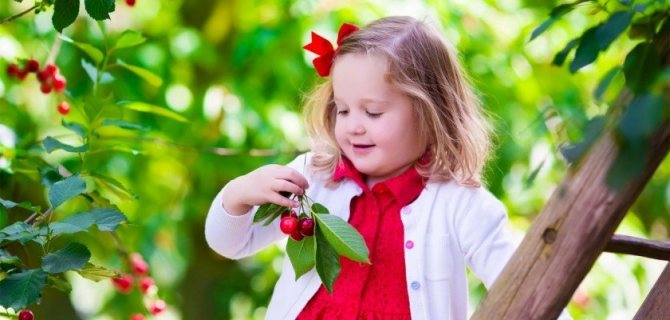

Harvesting cherries is a lot of fun
There is one more, the fastest and easiest way to collect cherries, it is called the "milking" method. The berries are plucked from a tree without a stalk. This method is only good if the cherries are immediately eaten or processed. Such a berry will not lie for a long time, in a day it will begin to lose juice and deteriorate.


Cherries without a stalk are not stored for a long time
Whole fruits with a stalk, placed in a storage container not too thick, can be stored at a temperature of 6 ° C for up to 3 weeks. Frozen fruits will lie for a whole year.
Cherry miracle is a very useful food product. It contains valuable natural substances and compounds. It has a bactericidal and anti-inflammatory effect on the human body. It is used as the prevention of tumors and iron deficiency. And most importantly, it strengthens the immune system. Therefore, fresh cherries are useful. Moreover, gradual ripening allows you to enjoy the taste and benefits for a long time.
Chudo cherries are also good for processing. Jams, jams, juices, liqueurs, compotes, berries in their own juice and many other delicious preparations are made from this wonderful berry.
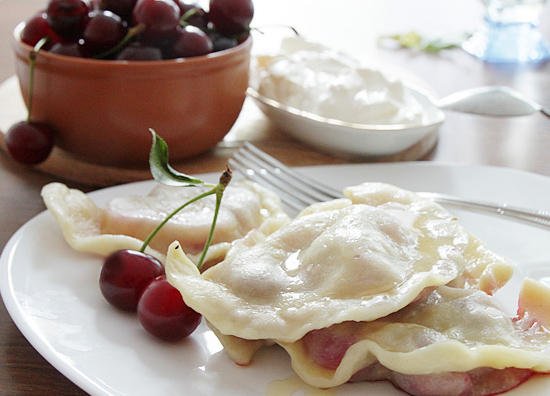

Cherry dumplings can be made with fresh cherries and frozen
Preparing for winter
Modern varieties of ducks are quite frost-resistant, so they do not need insulation for the winter - it is enough to mulch the trunk circle. Hay or fallen leaves are used as mulch. Varieties that are not particularly frost-resistant, grown in regions with harsh winters, are best insulated.Saplings under 5 years of age are insulated for the winter, regardless of the growing region.
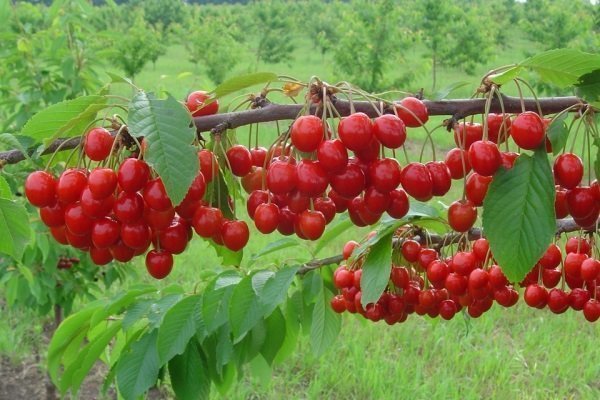

Insulation of ducks:
- the crown is covered with thick and dense polyethylene;
- the trunk of a tree is covered with snow.
Many gardeners wrap the trunks of fruit trees, including dykes, with burlap. Or they cover it with spruce branches. This method of shelter allows you to solve two problems - to save the tree from frost and from rodents. Hares are a terrible danger to young trees, and the smell of pine needles effectively scares them away.
conclusions
- The main crop care involves regular watering, top dressing, mulching, pruning.
- The miracle cherry is frost-resistant and requires standard care. It is zoned for the Central regions of the Russian Federation. Another name for the variety is Duke.
- The presence of pollinators is necessary, otherwise Duke's yield will be very mediocre.
- Fertilizers are applied to the holes before planting for better rooting. It is recommended to choose seedlings of one and two years of age, since such material is considered the most viable.
- Shelter for the winter, whitewashing of the trunk, other preparatory work before the onset is required.
- Tall trees take up quite a lot of space on the site, have a developed root system. But they practically do not break due to strong gusts of wind, under the weight of the fruits.
Planting a plant
The yield and durability of the duke will largely depend on how high-quality planting material will be used for planting, as well as on the competent choice and preparation of the site.
Sapling selection
The seedling must have a strong and intact root system. The roots must be well developed and have a healthy color. The trunk of a healthy seedling should not be damaged in any way.
Landing features
Before planting the acquired seedling, you should carefully approach the issue of choosing a place for planting. Dukes grow well and bear fruit abundantly in areas open to sunlight, without shading. In addition, the site should not be close to groundwater.
It is not recommended to plant trees in wetlands or low-lying areas. The best option would be to carry out the landing in a place protected from strong winds.
The basic landing rules are as follows:
- preparation of the planting hole is carried out a month before planting the seedling;
- the planting hole should be filled up to half with fertile soil, which should be enriched with organic and phosphorus-potassium fertilizers;
- the standard distance between seedlings should be about 5 m;
- when planting, the root system of the seedling should be straightened, and the root collar of the plant should be at the same level with the soil surface.
Pollination
To obtain a high yield, cross-pollination is used. The best result will be achieved if pollination is done with cherries.
This is due to the ultra-early flowering of the hybrid, which coincides with the early cherry varieties.
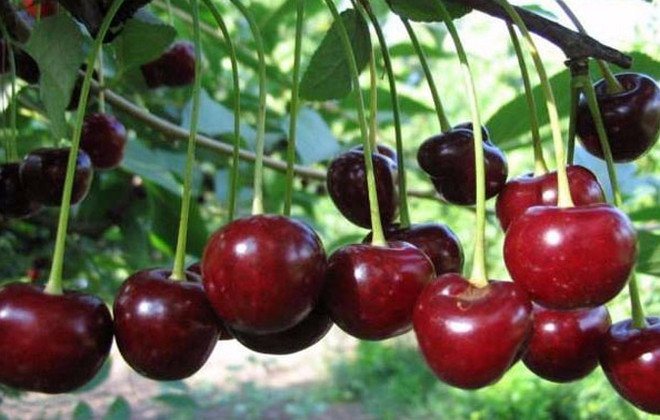

Bigger yields can be achieved by using the following Miracle Cherry pollinators:
- "Annushka";
- "Household";
- "Donetsk coal";
- Dzherelo;
- Donchanka;
- "Sister";
- "Iput".
The variety has sterile pollen, so it cannot act as a pollinator on its own.

